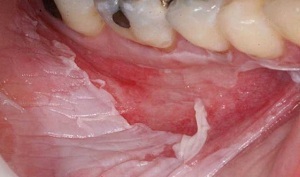 Burns of the oral mucosa are common injuries arising from exposure to soft heat or chemicals.
Burns of the oral mucosa are common injuries arising from exposure to soft heat or chemicals.
This process is painful and causes discomfort due to the presence of a large number of receptors in the oral cavity. Burns can be affected by the lips, tongue, cheeks, palate and gums. It is customary to isolate thermal and chemical burns of the oral cavity.
Contents
- Thermal burn
- Characteristic features
- Gravity grades
- Assisting
- Chemical burn
- Character of the symptom
- Diagnosis and treatment
- Prevention and prognosis
Thermal burn
May occur due to respiration over steam, the use of very hot drinks or food, exposure to hot objects,frostbite or cryotherapy in dentistry.
Characteristic features of
The main signs of the onset of burning are:
- acute pain and burning sensation when coming into contact with an irritant;
- soft tissue swelling;
- increased salivary secretion;
- the use of hot or spicy food leads to the re-occurrence of pain.
It is worth noting that the feeling of discomfort passes right after the termination of contact with hot food.
Degrees of severity
Based on the severity of the lesion, three categories of severity of burns are distinguished: 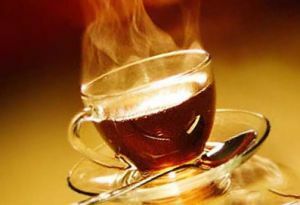
- The first category. Covered only the upper layers of soft tissue. There is redness and slight swelling. Symptoms go away on their own for several days.
- The second category. The lesion affects not only superficial, but also deep layers of the oral mucosa. The problem area is edematous, with the formation of blisters. In the event that the bubbles burst, jazvocchi remain in their place.
- Third category. Significant damage, accompanied by inflammation, the presence of purulent discharge and tissue death.
Assisting
The features of medical care after the occurrence of a burn depend on the complexity of the lesion. In mild cases, measures are taken to relieve the inflammation. For this it is recommended to rinse or apply a compress with cool water.
For moderate lesions, you should take pain medications before meals, rinse your mouth with cold water, use ointments to accelerate the regeneration of soft tissues.
In severe cases, treatment takes place in a hospital. The doctor prescribes antiseptics and anesthetics. In this period, a liquid and high-calorie diet should be observed.
Chemical burn
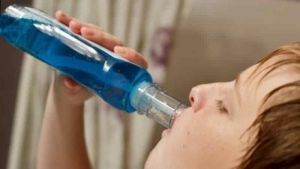 Injury can be obtained due to the influence of high concentrations of chemicals on soft tissues. Often this happens by chance at home or at work, as well as during treatment at the dentist.
Injury can be obtained due to the influence of high concentrations of chemicals on soft tissues. Often this happens by chance at home or at work, as well as during treatment at the dentist.
Acids, alkalis( ammonia, ammonia, bleach), arsenic, formalin and denture materials can cause burns. It is not uncommon for cases in which a burn is caused by the use of strong alcoholic beverages.
Symptom of
In the event of a lesion, pain immediately appears. Nausea and difficulty breathing may occur. The nature of the damage and its appearance depends on the chemical, its concentration and the duration of the effect on the mucous membrane. Negative effects will continue until tissue activity decreases, neutralization or dilution of the active substance.
The degree of damage is affected by the following factors:
- the strength of the action of the chemical;
- the amount of agent trapped in the oral cavity;
- duration of exposure;
- degree of penetration into soft tissues;
- location of the lesion focus;
- mechanism of exposure.
Sulfuric acid causes the appearance of a white scab, which eventually darkens. When burned with hydrochloric acid, the resulting wound has an 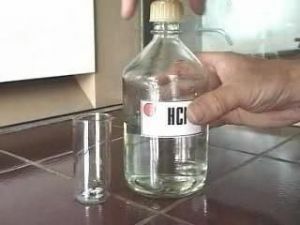 yellow tint.
yellow tint.
Alkali acts longer and causes more unpleasant feelings and consequences than acid. This is explained by the fact that the acids convert the protein of tissues into the crust and do not enter the deep layers of the mucosa. In turn, alkali provokes the emergence of wet necrosis, the structure of the tissues becomes loose and allows the chemical to be absorbed unobstructed.
Diagnosis and treatment
In the case of a chemical burn, it is first necessary to stop the action of the aggressive substance on the mucous membrane of the mouth. Depending on the type of chemical, the appropriate first aid method should be selected:
- If the burn was caused by with acids, it is necessary to create a neutral environment with alkali, at home, a soap or soda solution can be used;
- when is affected with alkali, citric acid or vinegar should be used;
- in case of soft tissue injury with phenol , the oral cavity is treated with castor oil.
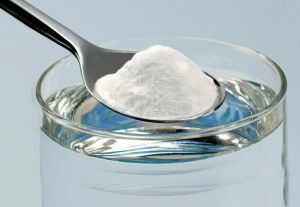 After first aid, it is necessary to apply for examination in the hospital, even if the damage is at first glance insignificant.
After first aid, it is necessary to apply for examination in the hospital, even if the damage is at first glance insignificant.
In order to eliminate discomfort, the wound is treated with an anesthetic gel.
To diagnose burns in the mouth, it is often sufficient to have a detailed questioning of the patient as to what happened, as well as visual inspection. If the patient does not know the name of the substance, then a differential examination using acid, alcohol and alkali is carried out.
In severe forms of damage, laboratory tests of blood and urine can be used to detect intoxication of the body. When a chemical enters the organs of the digestive system, a direction is given for additional diagnostics using contrast radiography and gastroscopy.
In some cases, the doctor decides on the continuation of therapeutic procedures in the hospital. Self-medication can cause serious complications.
Treatment of chemical burns is similar to therapy of inflammatory processes. Used drugs for pain relief( solutions or pastes), the oral cavity is treated with antiseptic means.
To restore tissues as soon as possible, several basic rules must be observed:
- use soft food in the diet, refuse from pickles and smoked products, acidic foods and carbonated drinks, otherwise the wound will be irritated and slowly heal;
- regularly carry out treatment of the problem area with healing ointments;
- use herbal decoctions to rinse your mouth, having previously agreed this procedure with the attending physician.
Prophylaxis and prognosis of
In most cases, oral burns occur by negligence. Therefore, to prevent this, it is necessary: To keep chemicals and medical products out of the reach of children;
For mild to moderate lesions, the treatment usually occurs without complications and the tissues are restored in a short time. In severe injuries, adequate and timely treatment is necessary. Otherwise, the risks of necrosis, bleeding, sepsis and intoxication increase.
